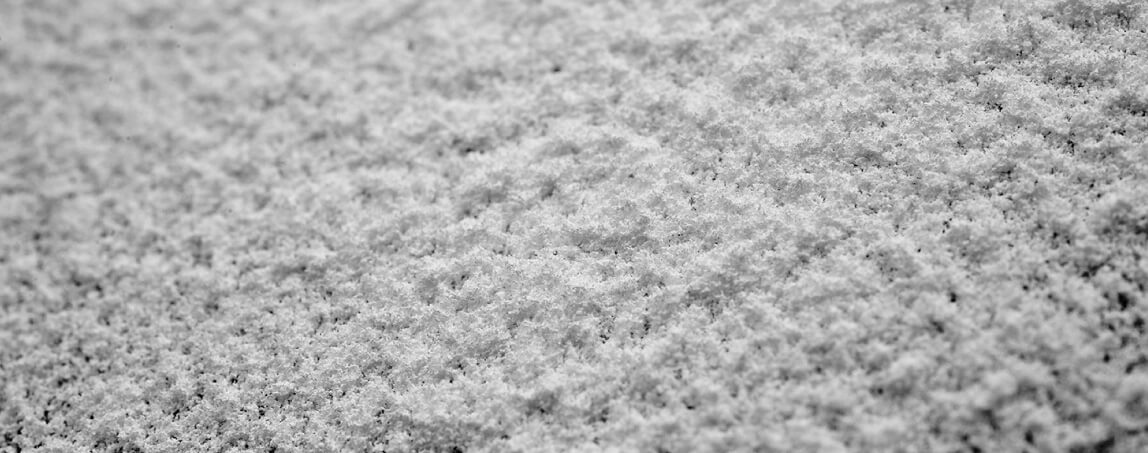What are the barriers to the purification process of high-purity quartz sand?
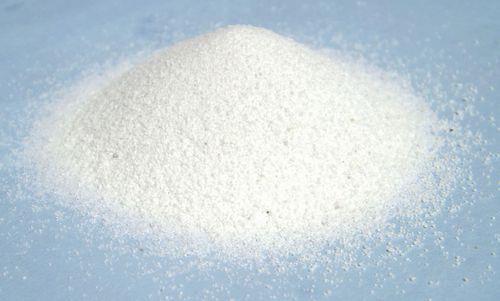
The preparation of high-purity quartz is mainly through chemical synthesis, natural crystal processing and deep purification of quartz minerals. However, because the preparation of chemical synthesis and natural crystal processing is restricted by raw materials, cost, output, etc., it is difficult for large-scale industrial application. Therefore, The preparation of high-purity quartz through mineral processing is the focus of research and application in the past and present.
The purification process of high-purity quartz first grinds vein quartz or quartzite to the required particle size and removes some impurities, and then separates or dissolves impurities by physical and chemical means. The whole purification process can be simply summarized as three processes: pretreatment, physical treatment and chemical treatment, and specifically adopts various beneficiation methods such as crushing, grinding, screening, magnetic separation, pickling, and chlorination roasting. The corresponding quartz purification process is designed according to the composition and grade of the original ore: quartz ore with high sodium content needs to be calcined at high temperature, and carbonate minerals with high calcium and magnesium content need to be pretreated with hydrochloric acid.
Specifically, the three major steps of purification of high-purity quartz sand are as follows:
(1) Preprocessing link. The purpose of the pretreatment stage is to preliminarily screen impurities or crush the quartz raw materials to the desired particle size that is conducive to the release of impurities and subsequent processing. Generally, mechanical crushing, electric crushing, optical sorting, ultrasonic crushing, thermal shock crushing and other processing methods are used.
(2) Physical processing stage. The physical beneficiation methods mainly include grinding, color separation, magnetic separation, flotation and other methods, which are generally used to treat the impurities of the associated minerals in quartz.
(3) Chemical treatment stage. Compared with physical beneficiation, chemical treatment is more efficient in removing impurities, and the advantages of deep penetration in microcracks and grain boundaries can better handle inclusion and lattice type impurities. Pickling, leaching and thermal chlorination are the three main chemical treatment processes.
Regarding impurities, which are the most difficult to purify?
There are many kinds of impurity elements in quartz. The content of each impurity element in quartz has different effects on purification and processing. Therefore, it is necessary to consider the upper limit of the content of the main impurity elements, rather than simply setting the upper limit of the total amount. Natural quartz crystals often co-produce with a variety of minerals, such as chlorite, rutile, tourmaline, calcite, fluorite, muscovite, biotite, sphalerite, hematite, pyrite, epidote , cordierite, feldspar, amphibole, garnet, pyroxene, topaz, ilmenite and clay minerals, etc., these minerals are the main source of impurities in quartz solid inclusions.
Fe: For different forms of iron impurities, different beneficiation and purification methods such as screening, classification, scrubbing, chemical acid leaching, flotation, gravity separation, magnetic separation and microbial leaching can effectively purify iron impurities.
Al: The aluminum impurities in quartz ore mainly exist in the form of feldspar, mica and clay minerals, which can be removed by scrubbing and grading desliming methods. For the aluminum-bearing minerals in the form of feldspar, the effective separation from quartz has always been a difficult point in the beneficiation industry, especially the separation of feldspar and quartz. Because the two belong to framework silicate minerals with highly similar physical properties, they cannot be separated by gravity separation and magnetic separation. The most effective method is flotation, and mixed acid leaching is also used in deep purification.
Therefore, some scholars judge whether naturally produced quartz can be used as high-purity quartz according to the content of Al and Ti in quartz. Usually, the content of Al and Ti in quartz is relatively high, and it is difficult to remove them by a simple purification process, and fine purification will increase the production cost. Therefore, the content of Al and Ti in quartz is the main factor restricting the purity of quartz. Accordingly, when the content of Al and Ti in quartz is less than 25ug/g and 10μg/g natural quartz, respectively, it can be attributed to the category of high-purity quartz.
In summary, we believe that the purification technology process of high-purity quartz sand is not complicated, but it is difficult to identify ores and achieve the ultimate purification of some impurities through combined processes, especially for the removal of some specific elements.
Is the talc used for plastic reinforcement and modification, the whiter the better?
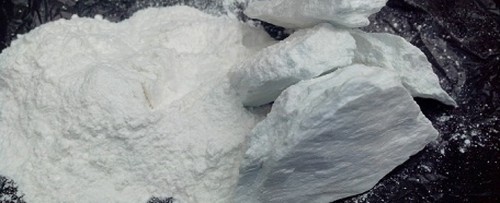
Plastic reinforcement and modification is an important application field of talc, especially for polypropylene modification in the automotive and home appliance industries, and whiteness is an important indicator of talc products. So, is talc powder for plastics, the whiter the better?
The whiteness of talc used in the plastics industry is usually expressed by CIE Lab (L*a*b*). In addition to measuring dry whiteness, wet whiteness is also measured. Dry whiteness is the definition of whiteness in the usual sense. Wet whiteness is the whiteness of talc powder after adding an appropriate amount of DMP (dimethyl phthalate) or DOP (dioctyl phthalate).
The factors that determine the whiteness of talc are not only the raw material itself, but also the particle size, moisture and impurities. If it contains dark impurities, such as iron sulfide, graphite, etc., the finer the product, the lower the whiteness.
There are many colors of talc in nature. Light-colored talc is white after crushing, but after mixing with resin, the color of the matrix will show more or less the true color of talc. This disadvantage limits the versatility of talc, especially the use of dark-colored talc in plastics. Compared with dry whiteness, wet whiteness can more intuitively reflect the degree to which talc changes the color of the plastic matrix. The lower the b*(b) value in wet whiteness, the smaller the color change of the plastic matrix.
Most of the world's talc is not white. White talc mainly comes from China, Afghanistan, and India, which is relatively limited. With the growing demand for white talc in the plastics industry, the price has continued to rise in the past 20 years. The shortage of white talc is a long-term trend in the future. In fact, white talc is not needed in many applications. For example, in the enhancement and modification of dark plastic, the enhancement effect of using white talc and dark talc is the same.
Tests show that for every 1% increase in wet whiteness of talc, the whiteness of the final product increases by only 0.2% to 0.3%. One-sided pursuit of the whiteness of talc is meaningless. In the past, because the price of white talc was too low, many users did not think much about the increase in the cost of using white talc. With the reduction of supply and the increase of price, it is necessary to change the usage habits and improve the comprehensive utilization of resources.
The talc powder used for enhancement and modification also needs to control the number of black spots, especially for light-colored products that have higher requirements on appearance. These black spots are formed after grinding of natural iron sulfide ore, dark minerals such as graphite, or dark impurities from mining. A small amount of black spots has basically no effect on whiteness, but visible black spot defects will be formed on the surface of light-colored plastic products, affecting the appearance. A large number of black spots will adversely affect whiteness. The impurities will be further broken with the increase of powder fineness, resulting in a decrease in powder whiteness.
Steady growth in the market size of silica for toothpaste
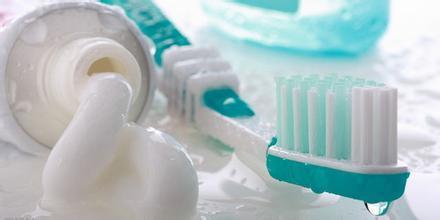
Silica is a high-quality abrasive that has developed rapidly in recent years. It is the only abrasive for preparing transparent and translucent toothpaste. It has the advantages of low friction value and good fluorine compatibility. Its friction value, oil absorption value, specific surface area, water absorption capacity , light transmittance, refractive index, etc. can be adjusted in a wide range to suit the needs of each formula, and the paste can also have excellent thixotropy, dispersibility, stability and other physical and chemical properties.
The global market space in the toothpaste field is about 300,000 tons, of which about 60,000 tons are domestic, and it is expected to maintain stable growth. Market growth reports show that the global market size of silica for toothpaste in 2021 will be US$390 million, with a compound growth rate of 4.85% from 2021 to 2028, and the market size will reach US$494 million by 2026, of which the domestic demand for silica in toothpaste industry The scale is close to 800 million yuan, corresponding to an average price of about 0.8-15,000/ton (the global/domestic market demand is 30/60,000 tons).
With the improvement of health awareness, the oral care market in which toothpaste is located is expected to reach a CAGR of 10% in the next five years. Frost & Sullivan predicts that the total retail sales of my country's oral care market will increase to 152.2 billion yuan in 2025, with a CAGR of 10%. Toothpaste is the main oral cleaning product, accounting for 60% of the oral care market, and as a daily necessities, the unit price is relatively low, with rigid demand, and the market size is expected to grow steadily.
The domestic market space of silica for toothpaste is about 800 million, and the demand is about 60,000 tons. Abrasives are the main raw materials of toothpaste, generally accounting for 20% to 30% of the total formula (by weight), and have an important impact on the basic functions of toothpaste to clean the mouth and reduce tooth stains. The global demand is predicted to be between 300,000 and 350,000 tons according to Market growth reports; the domestic consumption of silica for toothpaste in 2019 is 45,000 tons, and the China Oral Cleaning and Care Products Association predicts the scale of domestic demand for silica for toothpaste in 2026 It is close to 800 million yuan, corresponding to an average price of 0.8-15,000/ton, and the market demand is about 60,000 tons, with a compound growth rate of 5% in 2021-2026.
Under the trend of consumption upgrading, the proportion of silica in abrasives is expected to increase
As a high-quality abrasive for toothpaste, the penetration rate of silica in the domestic market is expected to further increase under the consumption upgrade.
Silica is expected to achieve product substitution due to the sharp rise in the price of calcium hydrogen phosphate. Phosphate rock is a non-renewable resource and has been approved by the State Council as a strategic mineral, and its mining is strictly controlled. At the same time, phosphorus chemical industry is a high-pollution, high-energy-consuming industry. The operating rate is limited under the background of environmental protection and dual carbon, and under the background of tight supply The price of phosphate continues to climb to 4,000 yuan / ton, an increase of nearly 100% from the beginning of 2020, and the price of food-grade calcium hydrogen phosphate has been higher than the price of silicon dioxide, so silicon dioxide is expected to realize the realization of hydrogen phosphate in the next 1-2 years. Fast replacement of calcium.
Calcium carbonate has disadvantages such as damage to teeth, and will be replaced at an accelerated rate under the trend of consumption upgrading. The RDA value of natural calcium carbonate is usually high, which is easy to damage the gums and dentin. In addition, calcium carbonate easily reacts with free fluorine in fluoride toothpaste to produce insoluble calcium fluoride, which affects the efficacy of fluoride toothpaste. At present, the proportion of A-grade toothpaste (> 9 yuan per stick) in the domestic market has reached 55%, and the proportion of calcium carbonate will decrease under the trend of consumption upgrading. And the rising price of calcium carbonate also makes the advantage of low price no longer prominent.
The calcium carbonate industry is highly competitive, focusing on the development of high-end products such as modification is the key
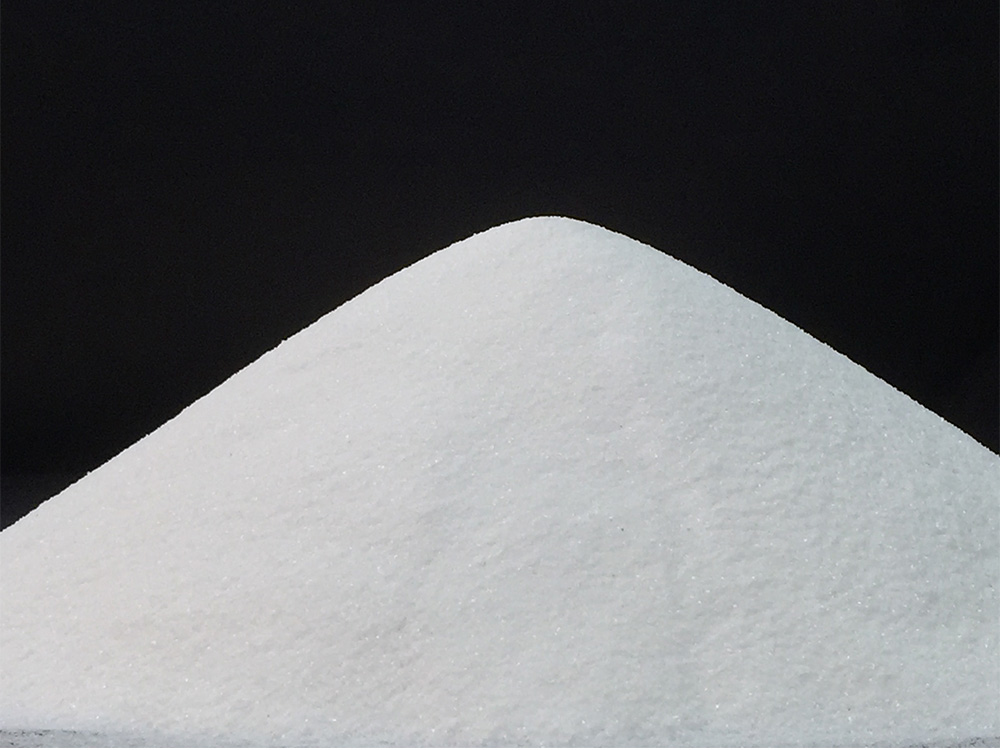
China is the world's largest producer and consumer of calcium carbonate, with annual production and sales accounting for more than 30% of the world's total. In 2020, the market size will reach 7 billion yuan. The production areas are mainly concentrated in Guangxi, Sichuan, Guangdong, Anhui, Jiangxi, Hunan, Henan, etc. province.
Although my country is a big producer of calcium carbonate, but limited by resources, technology, capital, site, cost control, etc., many enterprises have backward production technology, low industrial level, high resource consumption, heavy environmental pollution, low degree of land and energy intensive conservation, Due to the lack of high-end talents and the lack of independent innovation ability of enterprises, it is still not a strong country in the production of calcium carbonate products.
Calcium carbonate enterprises should change the industrial chain formation mode, take the market as the center, and change the traditional "production, supply and marketing homeopathic mode" into "marketing, supply and production trans mode". The production enterprises of downstream products in the industry should be introduced into construction first, and then the production of calcium carbonate powder should be planned according to production needs. Qualified enterprises should form an industrial chain internally, so that the products produced are interlinked, eliminating excess capacity and maximizing profits.
The calcium carbonate industry should focus on high-end development, do a good job in product modification, enrich and improve product performance; promote product refinement and specialized development, focus on crystal form control, and provide a foundation for downstream development; do a good job in product, production equipment, and process control. The upgrading of the industry and the upgrading of mechanization to automation and intelligence; to do a good job in group standards, the original national standards can no longer represent the advanced level of the industry, so the development of group standards is conducive to increasing industry-specific calcium varieties and improving product quality. The industrial scale of upstream and downstream enterprises continues to expand, and a complete calcium carbonate industry chain is initially formed.
From the perspective of market competition, the competition in my country's calcium carbonate industry is becoming increasingly fierce. Large-scale calcium carbonate manufacturers have high production and sales rates, and the product supply is in short supply, and they have expanded their production capacity. Small and medium-sized calcium carbonate manufacturers are facing survival difficulties due to high energy consumption, small scale, and poor quality stability, and there is a need for further integration in the industry. In the future, in the process of industry integration and further improvement of market concentration, large calcium carbonate manufacturers will achieve better development by virtue of their advantages in scale, technology, brand and quality.
Effects of Ultrafine and Calcining Treatment on the Hiding Power of Kaolin
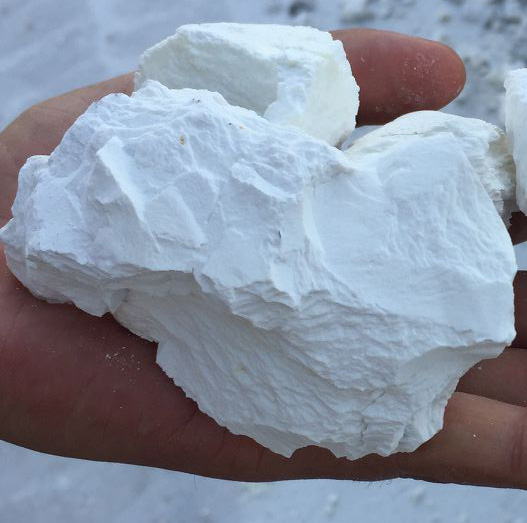
Coal-measure kaolinite is a very important non-metallic mineral. The kaolin obtained by crushing, grinding and calcining has a series of excellent properties and has been widely used in many industries, especially the paint industry.
At present, the price of comon calcined kaolin products is relatively low, but its application in high-grade coatings is limited due to its unsatisfactory covering power. The effects of ultra-fine and calcination treatments on the covering power of kaolin were studied, and the results showed that:
(1) With the increase of particle size, the covering power of calcined kaolin gradually increases. The main reason is that the finer the kaolin particles, the greater the covering power.
(2) When the calcination temperature is higher than 850 °C, with the increase of the calcination temperature, the fine particles are sintered to form larger particles, which reduces the covering power of kaolin.
(3) The coal-measure kaolin is crushed, ground, and ultra-fine, calcined at 850 °C, and then disintegrated and depolymerized for a second time to obtain calcined kaolin with high covering power, which provides practicality for the application and deep processing of coal-measure kaolin. reference basis.
How to modify the surface of nano-zinc oxide?
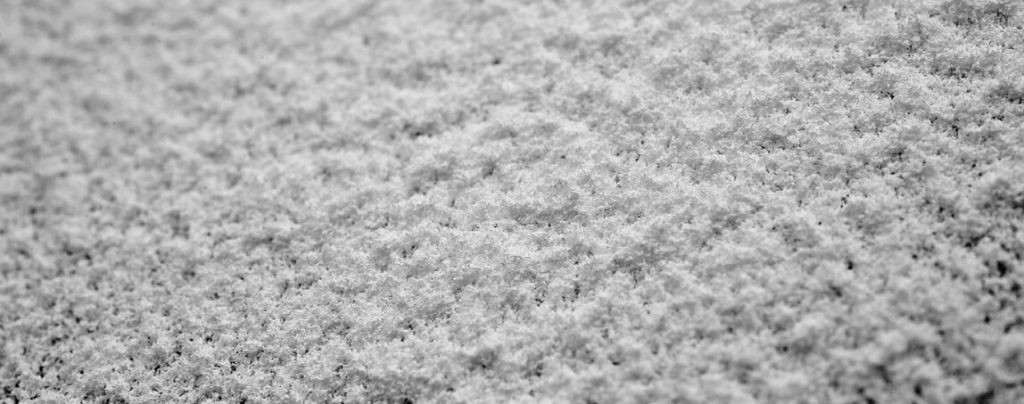
Nano-zinc oxide is a new type of functional fine inorganic chemical material. Due to its small particle size and large specific surface area, it has unique physical and chemical properties in chemical, optical, biological and electrical aspects. It is widely used in antibacterial additives, catalysts, rubber , dyes, inks, coatings, glass, piezoelectric ceramics, optoelectronics and daily chemicals, etc., the development and utilization of broad prospects.
However, due to the large specific surface area and specific surface energy of nano-zinc oxide, the surface polarity is strong, and it is easy to agglomerate; it is not easy to disperse uniformly in organic media, which greatly limits its nano-effect. Therefore, the dispersion and surface modification of nano-zinc oxide powder has become a necessary treatment method before nano-materials are applied in the matrix.
1. Surface coating modification of nano-zinc oxide
This is the main surface modification method of inorganic fillers or pigments at present. Surfactant is used to cover the surface of particles to give new properties to the surface of particles. Commonly used surface modifiers include silane coupling agent, titanate coupling agent, stearic acid, silicone, etc.
2. Mechanochemical modification of nano-zinc oxide
This is a method of using pulverization, friction and other methods to activate the particle surface with mechanical stress to change its surface crystal structure and physicochemical structure. In this method, the molecular lattice is displaced, the internal energy is increased, and the active powder surface reacts and attaches to other substances under the action of external force, so as to achieve the purpose of surface modification.
3. Nano-zinc oxide precipitation reaction modification
The method uses organic or inorganic substances to deposit a layer of coating on the surface of particles to change their surface properties.
At present, some breakthroughs have been made in the preparation technology of nano-zinc oxide, and several industrialized manufacturers have been formed in China. However, the surface modification technology and application technology of nano-zinc oxide have not been paid much attention, and the development of its application field has been greatly restricted. Therefore, it is necessary to strengthen the research on the surface modification and application of nano-zinc oxide products, develop high-performance products, and broaden the application fields of products to meet the demand for nano-zinc oxide products in different fields.
Application of 7 categories of nano-powder materials in liquid silicone rubber
![]()
Liquid silicone rubber is mainly composed of basic polymers, reinforcing fillers, cross-linking agents and various auxiliaries in a certain proportion to prepare a base rubber with self-leveling and thixotropy, and then mix it with air at room temperature or under heating conditions. Elastomers formed by contact with moisture in or with cross-linking agents.
Because the physical and mechanical properties of pure liquid silicone rubber are very poor, it generally needs to be reinforced and modified to meet the needs of practical applications. Among them, adding reinforcing fillers is undoubtedly the most concise and convenient method. Commonly used nano-fillers are nano-silica, nano-calcium carbonate, organic montmorillonite, carbon nanotubes and graphene, nano-zinc oxide, nano-titanium dioxide, silicon carbide, aluminum oxide and nano-silver wires.
1. Nano silica
The synthesis methods of nano-silica are mainly based on gas phase method and precipitation method. Nano-silica prepared by gas phase method has few surface hydroxyl groups, uniform particle size and good dispersibility. Zhu Zhimin et al. used fumed silica as a reinforcing filler and found that after adding 10 parts of silica, the physical and mechanical properties of liquid silicone rubber were significantly improved, and the Shore A hardness, tensile strength and shear strength could reach 40, respectively. , 1.6MPa, 1.4MPa; there is no significant change in shear strength after aging.
Due to the higher cost of fumed silica, the lower cost precipitated silica is of interest. The water content of the precipitated silica is higher, and the surface hydroxyl number is much higher than that of the fumed silica, which makes the surface activity of the precipitated silica very high, and it is easy to agglomerate, which is not conducive to dispersion in the rubber matrix. In order to solve this problem, physical or chemical methods are usually used to modify its surface to prevent the occurrence of agglomeration and improve its dispersibility.
2. Nano calcium carbonate
Nano calcium carbonate has the advantages of small particle size, high specific surface area, high surface activity, large filling amount and convenient processing. , Nano calcium carbonate is widely used in liquid silicone rubber as a common reinforcing filler.
3. Organic Montmorillonite (OMMT)
Montmorillonite (MMT) is a typical layered silicate and is a relatively common reinforcing filler in the rubber industry. In order to improve the compatibility of MMT with silicone rubber, it is usually organically modified to obtain OMMT. The study found that OMMT can be well dispersed in the silicone rubber matrix, thereby greatly improving the physical and mechanical properties of the silicone rubber.
4. Carbon Nanotubes (CNTs)
Due to the large aspect ratio, high modulus, extremely high toughness and low density of CNTs, they have always attracted attention, so the research of CNTs in the field of liquid silicone rubber reinforcement has become more and more extensive.
5. Graphene
Graphene is a kind of two-dimensional nanomaterial with hexagonal lattice arrangement formed by sp2 carbon atom hybridization. It has excellent electrical, thermal and physical and mechanical properties, and has stable performance, wide sources and simple preparation. , is a very ideal functional filler.
6. Nano zinc oxide
ZnO is a commonly used vulcanization activator in the rubber industry, and can also be used as a filler to improve the physical and mechanical properties and thermal conductivity of materials.
In theory, reducing the particle size of ZnO and increasing the specific surface area are beneficial to improve the reactivity, so nano-ZnO can be used as a functional reinforcing filler for liquid silicone rubber. In addition, ZnO is also a good UV shielding agent with anti-aging properties. The modified ZnO can also impart new properties to silicone rubber such as self-cleaning properties.
7. Nano titanium dioxide
Nano-titanium dioxide has the characteristics of less surface defects, more unpaired atoms, and large specific surface area. When it is used to strengthen rubber, it is prone to physical or chemical bonding and increases cross-linking sites, which is beneficial to improve the physical and mechanical properties of rubber materials. After being subjected to external force in the stress field, nano-titanium dioxide produces micro-domain deformation in the matrix to absorb energy, and the rubber material exhibits good radiation resistance.
Other functional reinforcing fillers In addition to the above-mentioned functional nano-reinforced fillers, there are many other types of reinforcing fillers, such as silicon carbide, alumina, nano-silver wires, etc. These reinforcing fillers can not only effectively improve the physical properties of liquid silicone rubber. Mechanical properties can also impart some special properties.
Due to the high demand in the high-end field, the status of synthetic mica has been further improved
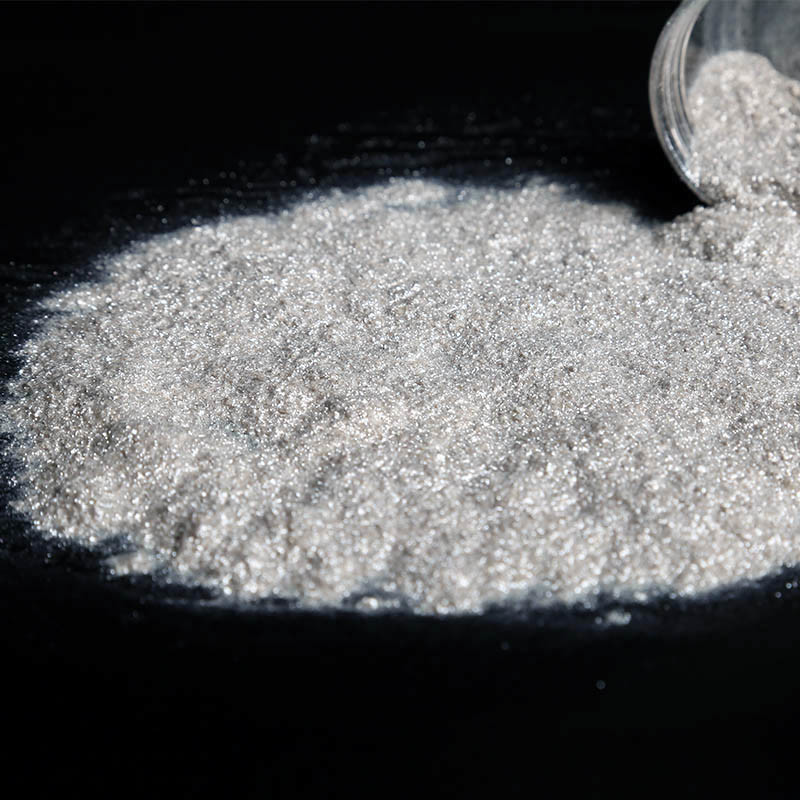
Pearlescent pigments in the field of new materials belong to a national strategic emerging industry. Synthetic mica is an important substrate for pearlescent materials. With the increase in downstream demand, the increase in the share of synthetic mica-based pearlescent pigments is becoming one of the future trends.
Pearlescent pigment, which is formed by coating a layer of oxide film (coating layer) on a substrate such as mica, is a high-grade pigment that subverts traditional pigments. It has excellent characteristics such as safety and environmental protection, non-fading, and rich colors. Mica is divided into natural mica and synthetic mica. Natural mica-based pearlescent pigments have low cost and are mainly used in low-end manufacturing; synthetic mica-based pearlescent pigments are expensive and are mainly used in high-end manufacturing, automobiles and cosmetics and other high-end fields.
Natural mica is a naturally formed rock-forming mineral, which is a non-renewable resource. With the exhaustion of natural mica resources, the production capacity is greatly restricted; while synthetic mica simulates the composition and structure of natural mica, and is artificially synthesized with minerals, with fewer impurities. It is superior to natural mica in terms of use temperature, insulation, safety and environmental protection, and color. The demand for synthetic mica in high-end fields such as cosmetics and automobiles continues to increase under the upgrading of consumption. Therefore, the market scale of synthetic mica continues to expand and the penetration rate increases. It is gradually replacing natural mica and becoming the main base material for pearlescent pigments.
Because of its excellent characteristics, synthetic mica pearlescent materials are widely used in downstream applications, not only widely used in popular high-end fields such as cosmetics and automobiles, but also favored by consumers. In the industrial field, it is also known as "industrial monosodium glutamate", which can be widely used in coatings, plastics, rubber, papermaking, building materials, metallurgy and other industries. For example, in coatings, synthetic mica powder is used in cars and architectural decoration coatings; in the rubber industry, synthetic mica powder is a good lubricant and mold release agent; in reinforced plastics, synthetic mica powder can be used as raw materials for plastic production. The additives are used to make modern engineering plastics with high strength, good elasticity and light weight; among insulating materials, synthetic mica paper series products are the most widely used electrical insulating materials.
Application and characteristics of talcum powder in food grade grease
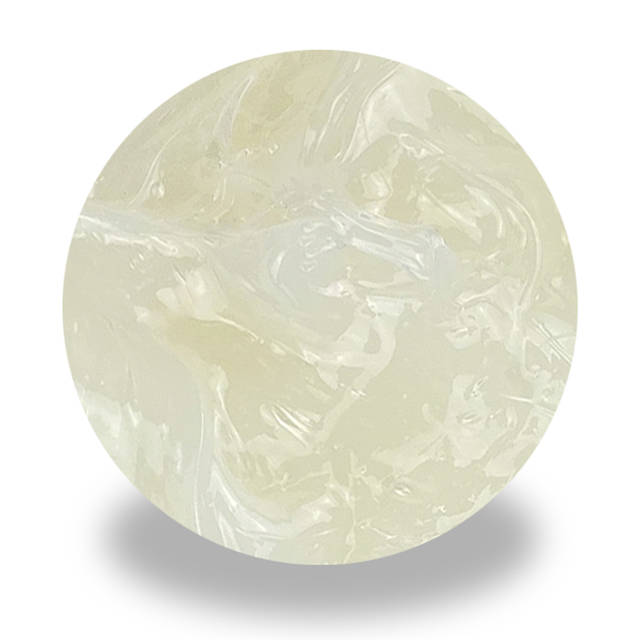
Food safety has always been the focus of people's attention. There are many factors affecting food safety. Among them, the pollution caused by the leakage of lubricating materials in food equipment is one of the important reasons. Food-grade grease is widely used in key transmission parts of food processing equipment such as bearings, chains and guide rails, and the lubricating performance of grease mainly depends on the additives used.
In view of the safety of food-grade grease, when selecting additives, non-toxic and harmless are the primary considerations. As a food additive, food-grade talc is often used in food flow aids and mold release; because of its good lubricating properties, it also has certain applications in the field of tribology, such as coating talc on protective clothing. Reduce the skin damage of medical staff during COVID-19; in addition, talc in lubricating oil has excellent anti-friction properties, which can better reduce the wear of cast iron equipment.
The composite aluminum base grease was prepared by white oil and thickener, and the effect of food grade talc mass fraction on the tribological properties of the grease was investigated. The results show that:
(1) Talc powder can improve the thermal stability of composite aluminum-based grease, and the epitaxial decomposition temperature of base grease is significantly lower than that of grease containing talc powder;
(2) Talc powder can improve the tribological properties of composite aluminum-based grease, that is, improve the stability of the friction process, reduce the friction coefficient and wear volume; with the increase of the mass fraction of talc powder, the friction coefficient and wear volume experience a first The change increases after the decrease, and when the mass fraction of talc is 1.0%, the average friction coefficient and wear volume are the smallest; Polishing plays an effective anti-friction and anti-wear effect;
(3) Greases with 1.0% talc added are most likely to be applied to food equipment and other fields.
(4) Talc powder is a layered silicate, which can be adsorbed on the surface of the friction pair during the friction process, which is equivalent to a "sliding bearing" for sliding, so as to reduce friction and reduce wear.
(5) From the point of view of the thermal stability of the grease, when the final degradation temperature is reached, the residual weight of the grease sample containing talc powder is higher than that of the base grease. This is because the main components of talc powder are MgO and SiO2, of which the heat of Good stability, can improve its thermal stability. Since a lot of heat is easily generated during the friction process, SiO2 with better thermal stability tends to stay in the gap of the friction pair. Due to the surface roughness of the steel plate, the real contact area between the steel ball and the steel plate is small, and it is subjected to high contact stress in the early stage of the friction process, which is prone to large friction and ravines on the surface of the wear scar. Therefore, some talcum powder (mainly SiO2) can repair the grooves generated on the surface of the wear scar during the friction process, thereby increasing the contact area between the friction pairs and reducing the contact stress between the friction pairs; at the same time, SiO2 is a commonly used polishing material, so a small amount of SiO2 can A micro-polishing effect is produced on the surface of the friction pair, thereby reducing friction and wear.
Understand the 16 major application fields and characteristics of illite
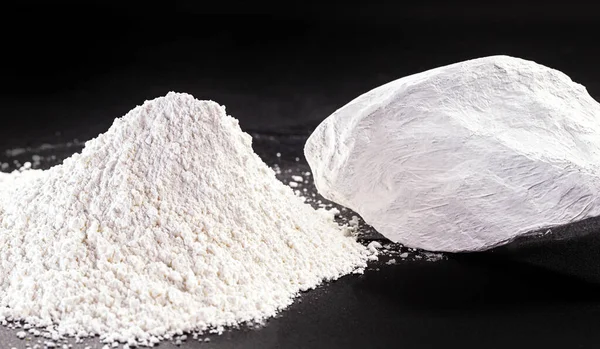
Illite is a potassium-rich 2:1-type dioctahedral silicate mica-type clay mineral with missing interlayers, high content of potassium and aluminum, low iron, fine, and good corrosion resistance and resistance. It has excellent physical and chemical properties such as abrasiveness, fluidity, absorption and heat resistance, and is widely used in chemical fertilizers, rubber and plastics, cosmetics, environmental protection, soil conditioning, ceramics, molecular sieves, construction, papermaking, medicine, food and other fields.
1. Fertilizer industry
(1) Potash fertilizer
(2) New granular fertilizer
2. Plastics and rubber industry
Currently, plastic fillers have attracted widespread attention because of their low temperature, high thermal stability, flame retardancy, and good mechanical strength.
3. Super absorbent composite material
Illite and acrylamide can be used as raw materials to synthesize hybrid materials with adsorption capacity. This composite material not only has good adsorption performance, but also enhances the compatibility with the environment.
4. Cosmetics
Illite has a large cation exchange capacity and small particle size, so it can be used as a cosmetic filler. Illite in cosmetics can absorb skin waste and toxins. Illite can be anti-bacterial, non-toxic and other properties, can reflect ultraviolet rays, so it can play a role in anti-ultraviolet.
5. Environmental protection
With the development of industry, the pollution of soil and water bodies has become more and more serious, and the discharge of heavy metal pollutants in the nuclear industry, especially the pollution of radioisotopes, has become increasingly significant, posing a serious threat to the survival of human beings.
6. Soil conditioner
Illite can also be used as a component of clay minerals in some acidic soils. Illite reacts with NaF solution with pH=4.7. This reaction can improve these acidic soils and increase crop yields.
7. Ceramics
In ancient times, illite was the main natural raw material for making pottery. In the production process of ceramics, the content of clay minerals will have a significant impact on the quality of ceramics. This is because illite is rich in potassium, so the increase in illite content will reduce the melting point of the product, reduce water absorption, and reduce the glass phase. ratio increased.
8. Molecular sieve
In industry, illite is mainly used as adsorbent, catalyst and ion exchanger, in addition, illite also has some applications in solar energy conversion and photochemistry.
9. Construction industry
Illite ore is rich in aluminum, which increases the toughness of the product; it is also rich in potassium, which reduces the temperature at which it is calcined during the preparation of porcelain materials, thereby reducing energy consumption. Bricks fired with illite have better thermal insulation effect and lower price.
10. Paper industry
Illite has good absorption, moderate covering ability and transparency, so it can enhance the effect of use.
11. Medicine
Protein, DNA, etc. can be adsorbed by illite, so illite can be used as a carrier of genes in clinical treatment. Illite can be combined with proteins to form complexes into the organism, and then the proteins will be released under the appropriate environment, so as to achieve the purpose of treating diseases.
12. Flame retardant materials
Illite has good chemical inertness, electrical insulation, heat insulation and other properties, and can be used in the production of flame retardant rubber cables, flame retardant textiles, and flame retardant power cables.
13. Synthetic diamond
Due to the good heat resistance, corrosion resistance, insulation and expansion of illite, a small amount of illite clay mineral can be added when preparing diamond.
14. Oil decolorization
Illite can discolor oil, and the illite after surface modification treatment has strong discoloration performance.
15. Oil drilling mud
The particles of illite are small so that it has good floating ability, good heat resistance and wear resistance, and can be used in the process of drilling wells.
16. Food field
Because the far-infrared rays emitted by natural illite powder can decompose or remove the odor released by various foods, and at the same time can activate the water molecules in the food to keep fresh and prevent oxidation, so the deterioration of the food can be avoided.

